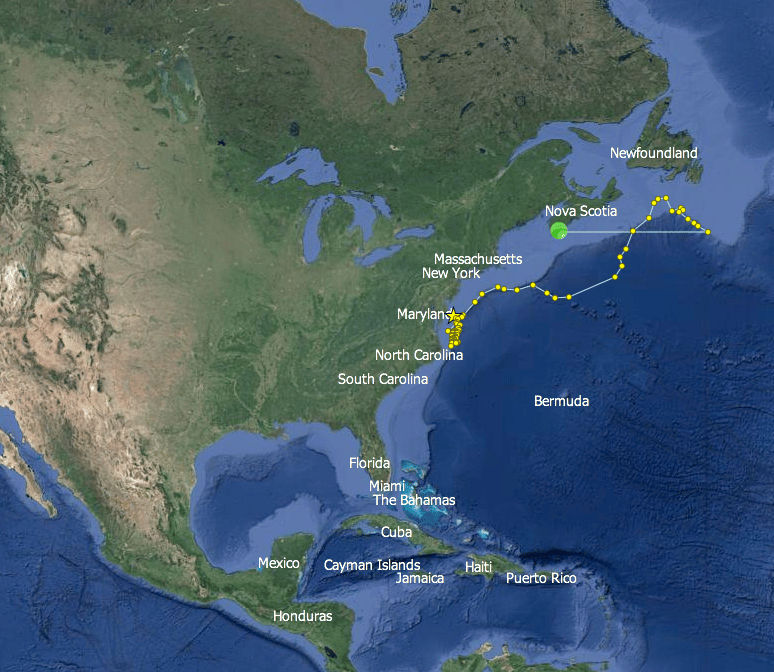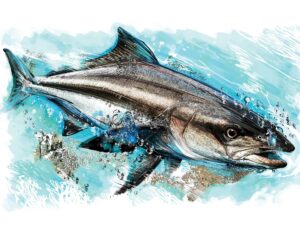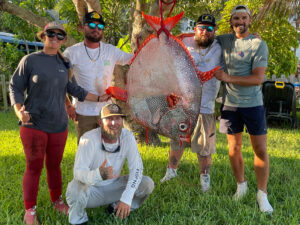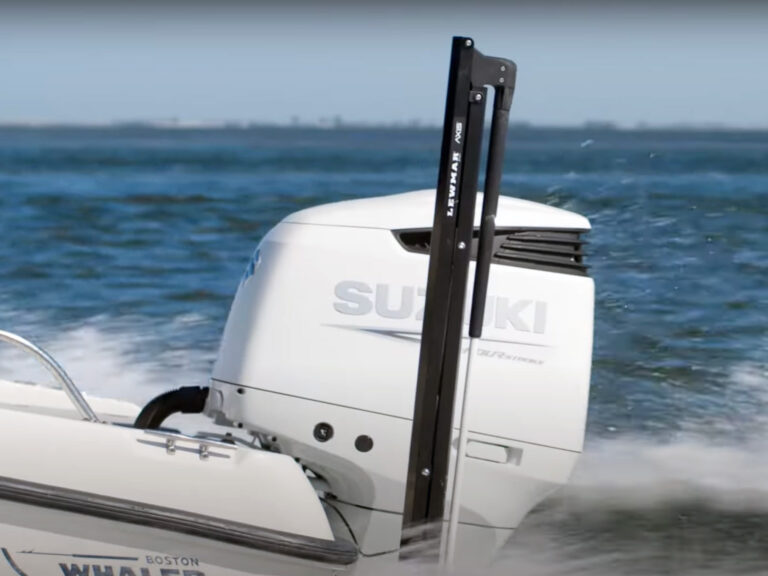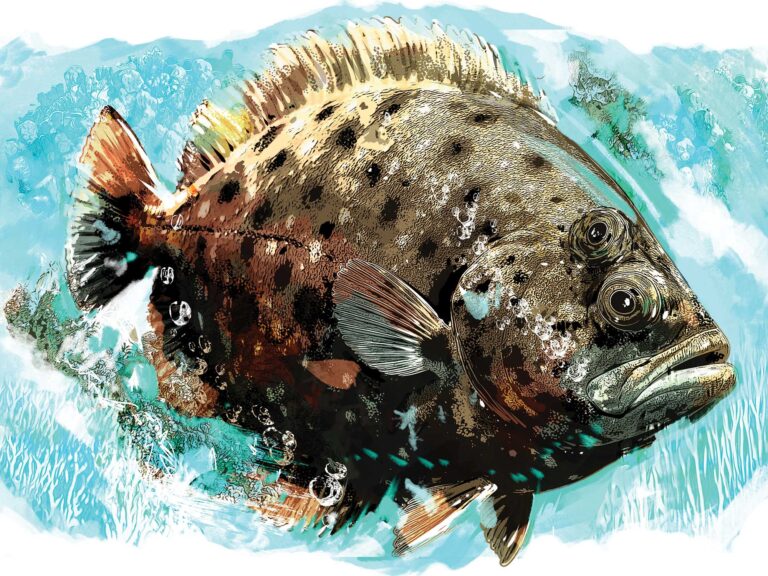Learn more about this initiative from our Mission for Mako Sharks gallery.
A shortfin mako shark and a blue marlin, both tagged by scientists this spring with expensive satellite tags, found their way onto fishing boats as catches in September. End of tag transmissions and fish migrations, but not end of story.
The loss of tagged fish and the data they were providing is a concern for researchers, who not only lose the animal and important information it was transmitting or collecting but the equipment, which in some cases can cost up to $4,000 per tag.
One oceanographic research team in South Florida, for example, has lost seven satellite transmitter tagged sharks to fishing in the last two years, representing over 20 percent of the sharks they were tracking.
In the case SOSF4, a male juvenile mako was caught by a swordfish longliner fishing the Grand Banks off Newfoundland, Canada, and blue marlin #137715, a 150-pound fish was caught by fishermen off Cuba, both were being monitored by scientists at the Guy Harvey Research Institute (GHRI) at Nova Southeastern University in Fort Lauderdale.
Unfortunately, these two fish were dead from capture, but in both cases the fishermen were kind enough to remove and return the satellite tags, which are now being downloaded for remaining data not yet transmitted and refurbished by the manufacturer for future use. Both fishermen received rewards for returning the tags.
“We’re asking fishermen, who catch a tagged animal to do one of two things. If it¹s alive and healthy, please release the animal as quickly as possible so it can continue its travels and provide important scientific data. If it is dead, please retrieve the tag and return if possible,” said Dr. Mahmood Shivji, the director of Nova Southeastern University¹s Guy Harvey Research Institute and Save Our Seas Shark Research Center.
Each tag, according to Dr. Shivji, will have a serial number and the manufacturer’s contact information. The fishermen are asked to get in touch with the manufacturer and provide information on where and when the fish was caught. This information will be conveyed to GHRI, who will contact the fishermen to make arrangements for the return of the tag and the reward. The Guy Harvey Research Institute is currently tracking dozens of sharks as well as marlin and sailfish.
The public can follow their movements in near real-time courtesy of an interactive website set-up by GHRI: www.ghritracking.org.
The website is an educational outreach component of the institute¹s quest to study shark and billfish long-distance migration patterns, with the ultimate goal being to better understand and protect them, as some species are threatened or endangered.
Learn more about this initiative from our Mission for Mako Sharks gallery.

